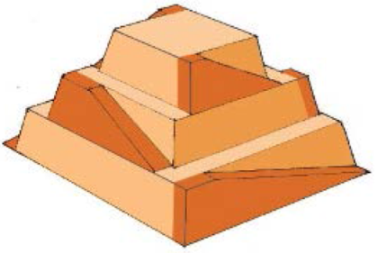Search results
Proper motion is the astronomical measure of the observed changes in the apparent places of stars or other celestial objects in the sky, as seen from the ... more
a) Calculate the gravitational potential energy stored in the pyramid, given its center of mass is at one-fourth its height.
b) Only a fraction of the workers lifted blocks; most were involved in support services such as building ramps, bringing food and water, and hauling blocks to the site. Calculate the efficiency of the workers who did the lifting, assuming there were 1000 of them and they consumed food energy at the rate of 300 Kcal/hour.
first we calculate the number of hours worked per year.
then we calculate the number of hours worked in the 20 years.
Then we calculate the energy consumed in 20 years knowing the energy consumed per hour and the total hours worked in 20 years.
The efficiency is the resulting potential energy divided by the consumed energy.
In accounting and finance, earnings before interest and taxes (EBIT), is a measure of a firm’s profit that includes all ... more
Proper motion is the astronomical measure of the observed changes in the apparent places of stars or other celestial objects in the sky, as seen from the ... more
Wind speed extrapolation
In wind energy studies, two mathematical models or 'laws’ have generally been used to model the vertical profile of ... more
In mathematical physics, equations of motion are equations that describe the behaviour of a physical system in terms of its motion as a function of ... more
A Doppler radar is a specialized radar that makes use of the Doppler effect to produce velocity data about objects at a distance. It does this by beaming a ... more
In finance, leverage is a general term for any technique to multiply gains and losses. Most often it involves buying more of an asset by using borrowed ... more
An amortization schedule is a table detailing each periodic payment on an amortizing loan (typically a mortgage), as generated by an amortization ... more
...can't find what you're looking for?
Create a new formula
The awe‐inspiring Great Pyramid of Cheops was built more than 4500 years ago. Its square base, originally 230 m on a side, covered 13.1 acres, and it was 146 m high (H), with a mass of about 7×10^9 kg. (The pyramid’s dimensions are slightly different today due to quarrying and some sagging). Historians estimate that 20,000 workers spent 20 years to construct it, working 12-hour days, 330 days per year.
